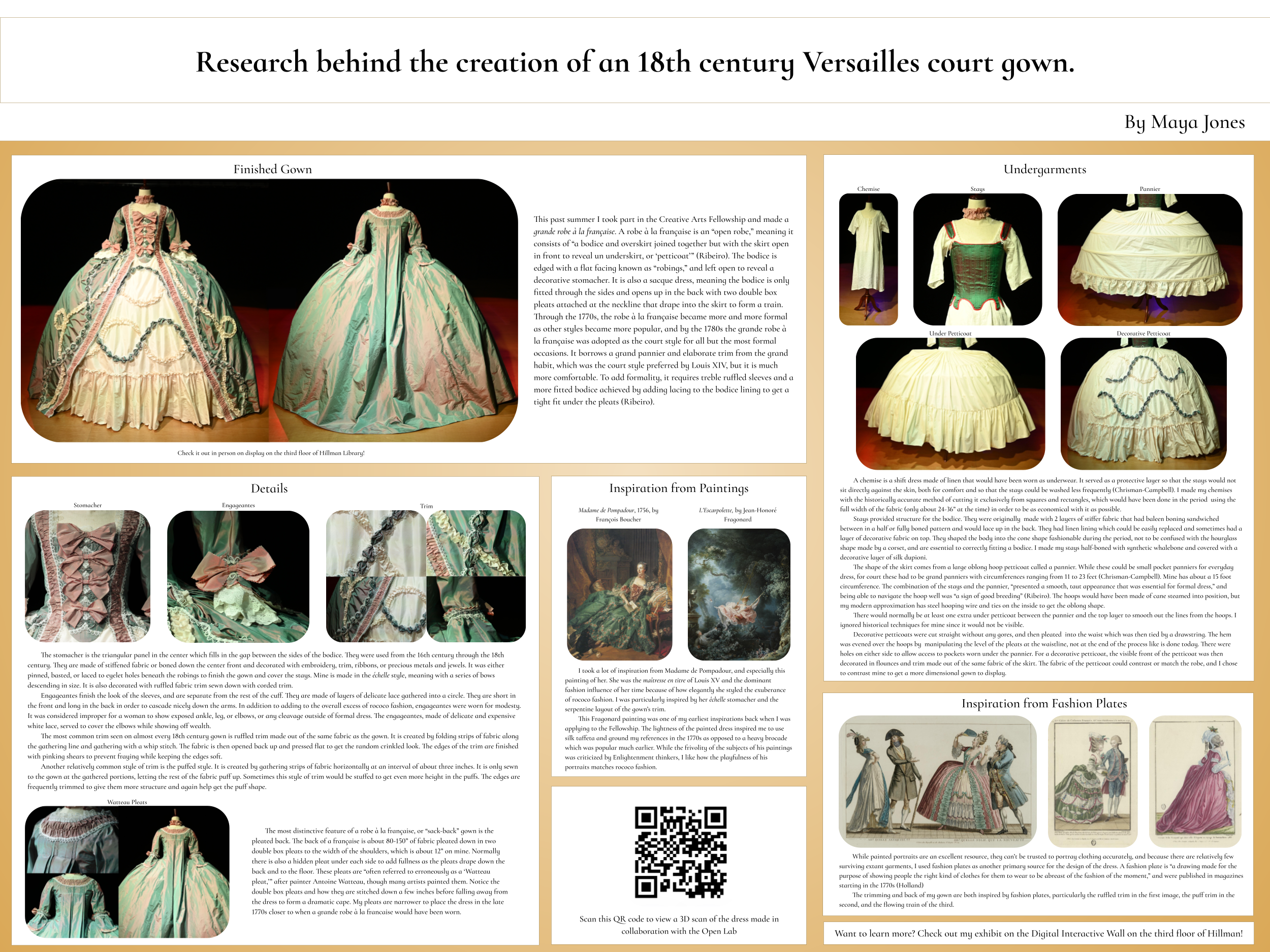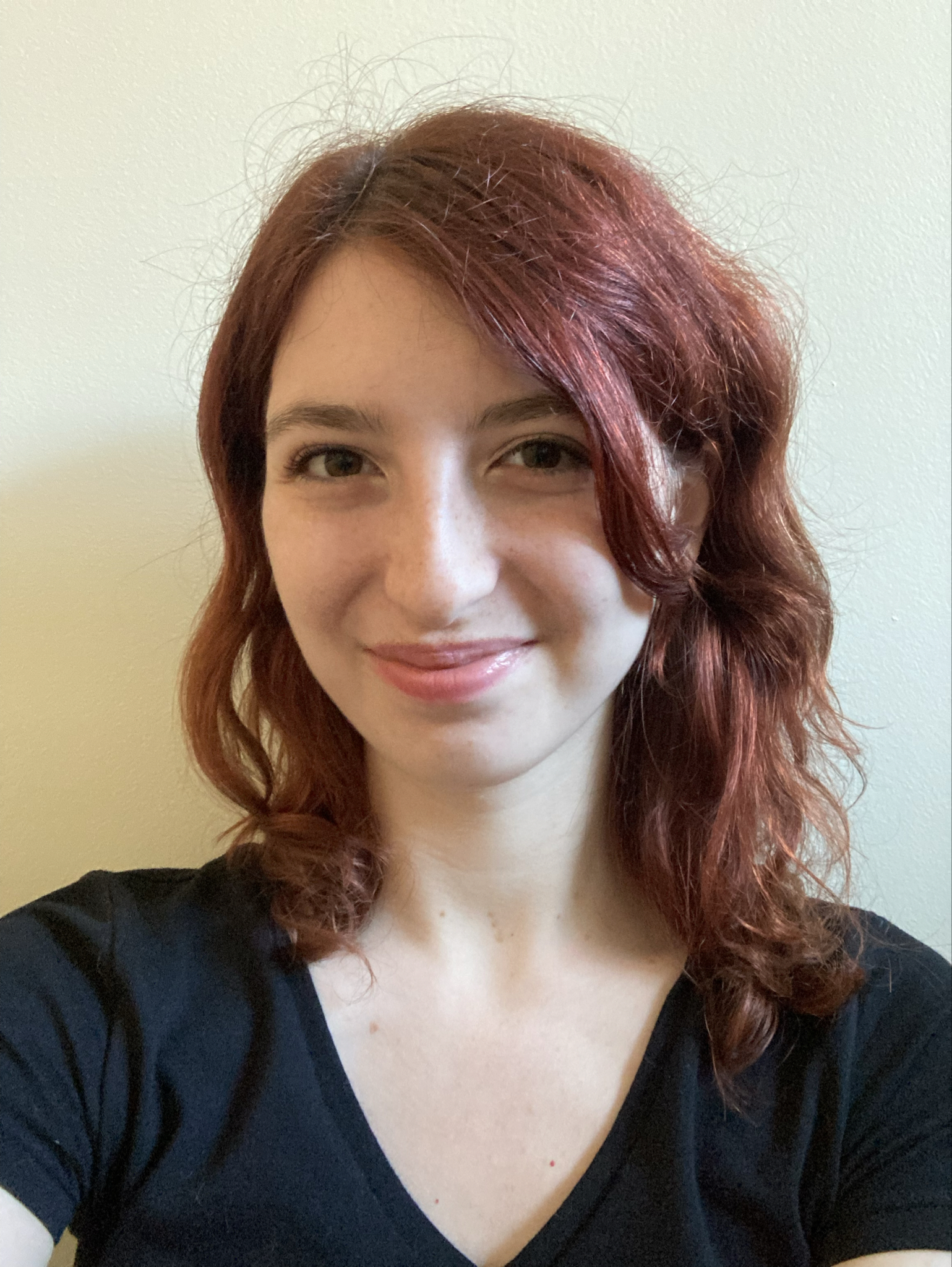Where did you get this idea? What was your process for designing and constructing this dress?
My name is Maya Jones, and I am a Theatre Arts and History major here at Pitt. I did the honors college creative arts fellowship over the summer. I made a Versailles court gown.
I got the idea for this a few years ago during my senior year of high school. It was Zoom high school, so I had time to do other things during my classes, and I started getting really into historical fashion and researching all those time periods. At the time, I was also making my prom dress, which is also historically inspired. I got really into the idea of making a Robe à la Francaise – the French court style. I knew it would be expensive, so I kept looking for a way to get funded to make this dress, and that’s how I found the creative arts fellowship. That really expanded what I was able to do with it because part of the fellowship was a huge research process that preceded it and from there, I started getting inspired by all the paintings, like those of Madame de Pompadedeur. In that respect, I started designing.
I also looked at a lot of modern interpretations of Robe à la Francaise on Instagram and was collecting all these references during the spring.
Over the summer I got into the construction aspect. I really wanted to not use a pattern for this. I drafted it all myself. I designed it all myself. I started with books of existing patterns in them, which are just the measurements of a dress that exists in real life it’s scaled down, so I used that to understand the sort of shapes that would go in the draft, and then draft it to my own measurements, and then made a mock-up, and test the mock-up, and did it. I was able to use real fabric to make this dress.
For constructing the dress, I had to make all the understructure, which is the stave, the chemine, the pannier, and then petticoats to smooth out the pannier. The pannier gives the dress its huge shape. I spent the whole summer constructing it. It took me over 300 hours, and it was a lot of hand sewing at the end to get a final product that looks finished and looks period accurate.
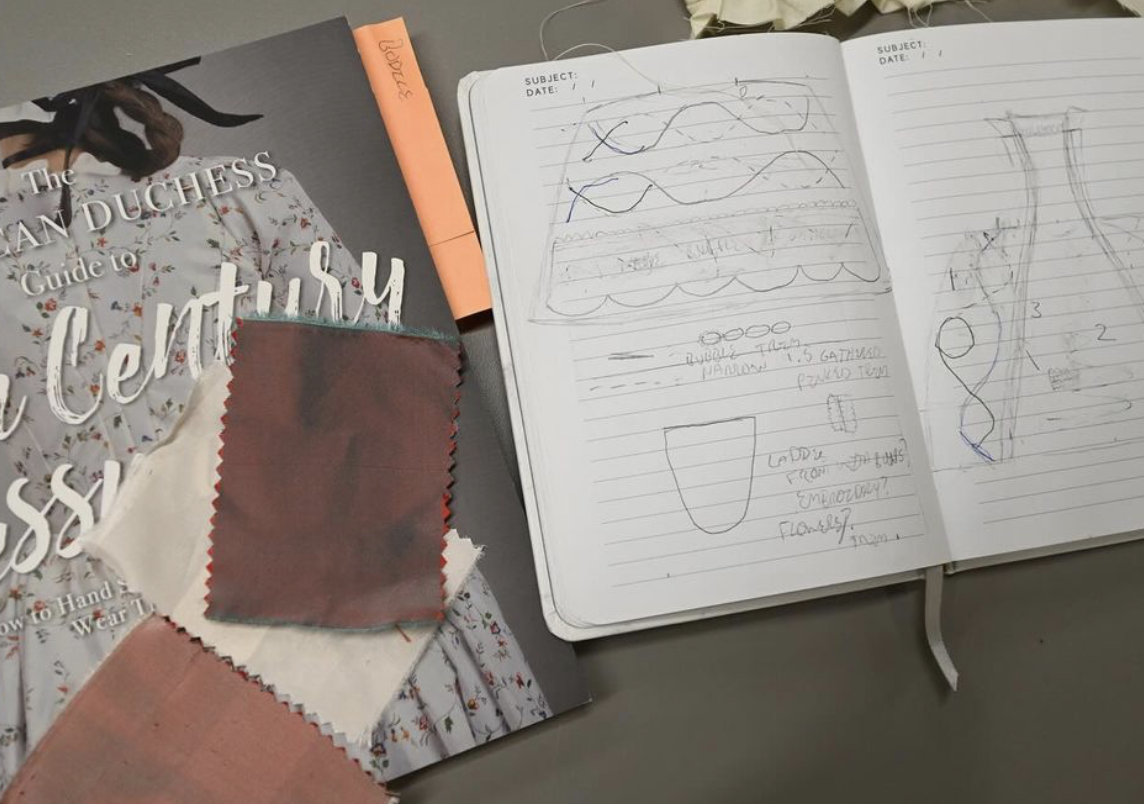
What was your favorite part of the process? What was the most challenging part?
My favorite part of the process was seeing it done! And probably the trim.
It was a lot of fun to design the ruffle trim, and the puff trim, and to decide where it goes on the dress, and to see it all come together. With every additional piece, it looked more and more finished. The bows at the end were literally the finishing touch. The trim was also the most challenging part because it was all hand sewn, and I have issues with my hands. (Anyone who sews ends up with overuse and injuries.) So, it was challenging to get through.
The staves were also hard to make, and it’s honestly a whole project by itself, is just making staves. They are sort of like the corsets of the time, and they create a cone shape instead of an hourglass shape. It’s a fully boned bodice that laces up the back. I made 4 mock-ups and lots of fittings. I used synthetic whale bone, so that was challenging as well.
The pannier is really hard to find a material that was lightweight enough to hold up the structure of the hoop, but also sturdy enough that when skirts came on top of it, it would not collapse on top of itself.
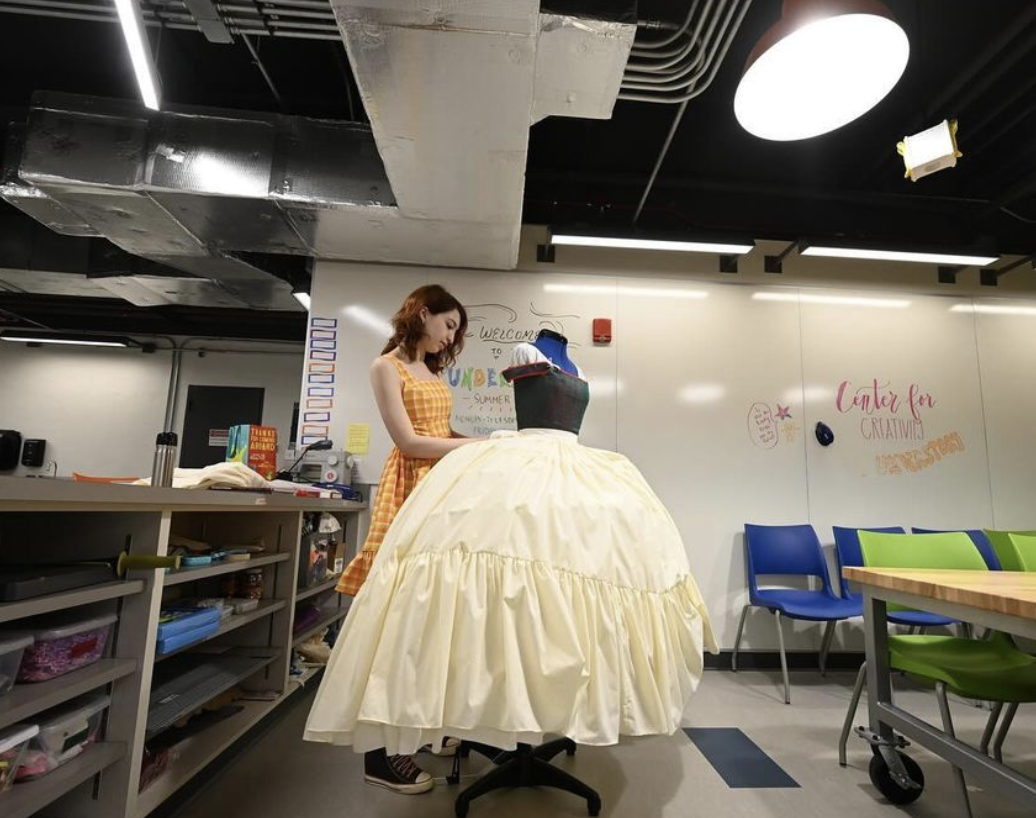
How did your Pitt mentors help you in constructing this piece?
I used a lot of Pitt’s resources. Since I mostly kept to the costume shop, Karen (Gilmer, Teaching Associate Professor of Costume Design) was hugely helpful. She was my mentor for the research process, and she gave me lots of book recommendations and let me use her own books as a foundation before I started constructing. Ricky Campbell, the costume shop manager, and Britney Graham, the costume shop assistant manager, also offered advice on construction, but it was also important for me to do all of for myself. However, it was nice to know that they would support me if I needed it.
I also got to explore a lot of Pitt’s maker spaces, like The Center 4 Creativity and The Understory in the Cathedral, where I did photoshoots. They have a nice stage area with stage lighting, and I was able to set up my dress and get some lovely photos with the Pitt photographer, Aimee (Obidzinski).
Currently the dress is on display in Hillman Library, and I am looking to do a digital exhibit, so there will be an exhibit on the digital interactive wall. For that, I used a lot of library resources, so I checked out a lot of books there. I learned about the resource sharing library, and that added to the whole experience, just having more knowledge going into writing about the project, so that I could explain it to someone other than myself.
I’m also using the library Open Lab. I’m making a 3D scan of the dress to go in the digital exhibit, but also in case I want to show my research at a research fair, and I can’t have the dress physically. I want to have this 3D scan, so I’m using the Open Lab to do that.
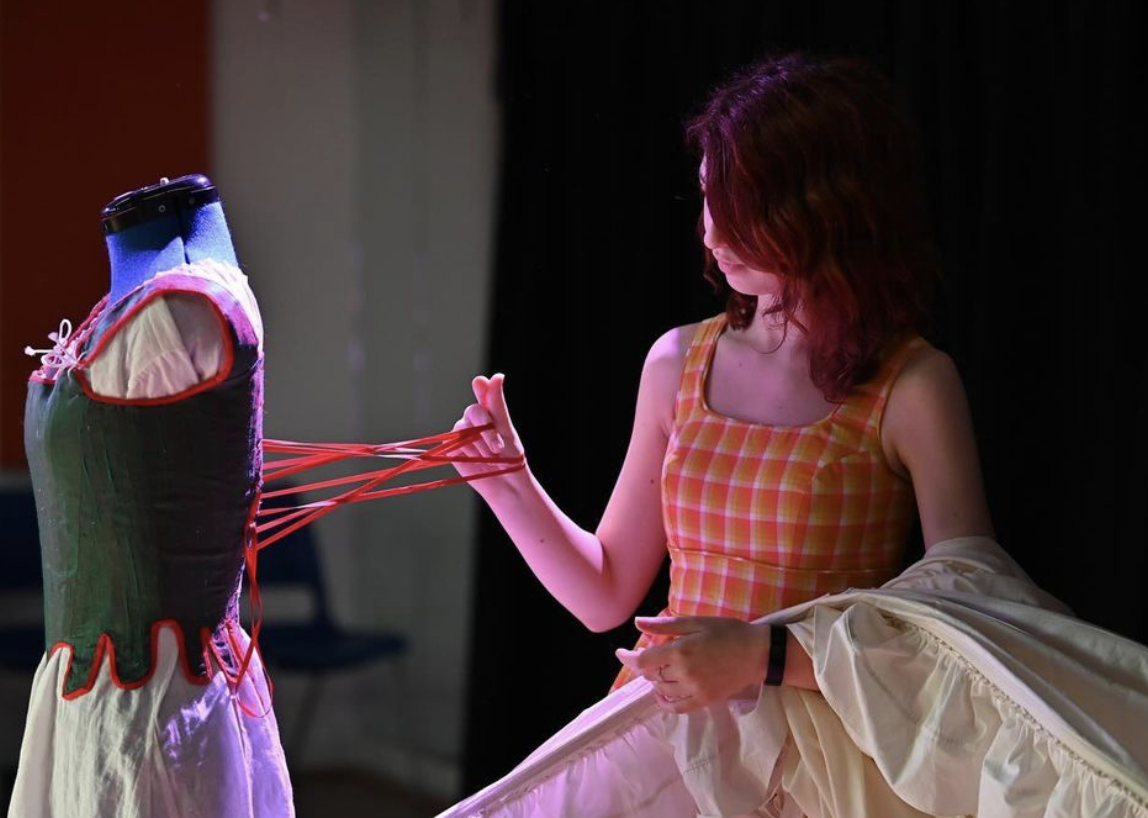

What draws you to costume design, specifically from this time period?
I’m particularly drawn to costume design because I never designed for myself. I started sewing thinking I was going to do fashion design. I was really into Project Runway. But I got more and more excited by the things that no one would wear, but that you could wear in theatre. That’s why I love historical fashion as well. Some of my favorite periods are the 1700s/18th century, because it looks weird with hoop skirts and the bodice. It’s a different sort of shape, and at first glance, it’s kind of ugly. But the more that I look at it, it’s just kind of lovely as well. And it’s different.
I also love the 1830s, which is sort of notorious in the historical fashion world for not being that attractive, but I think it’s just cool. It has a lot of puff trim. It's huge puff sleeves. And the hem falls at a weird part, and the waist band is weird. I just like the weirder stuff that also is quite pretty if you really look at it for a while, and I love the freedom of costume design to make something on the wacky side. It does not all have to be wearable, unless it is a contemporary show.
It’s also the idea of designing for a character. What really draws me to costume design is creating for a character that does not really exist and can be super stylized, whether they’re in a period or contemporary piece. You can really go there with that design, and it helps you see a character and not a person.
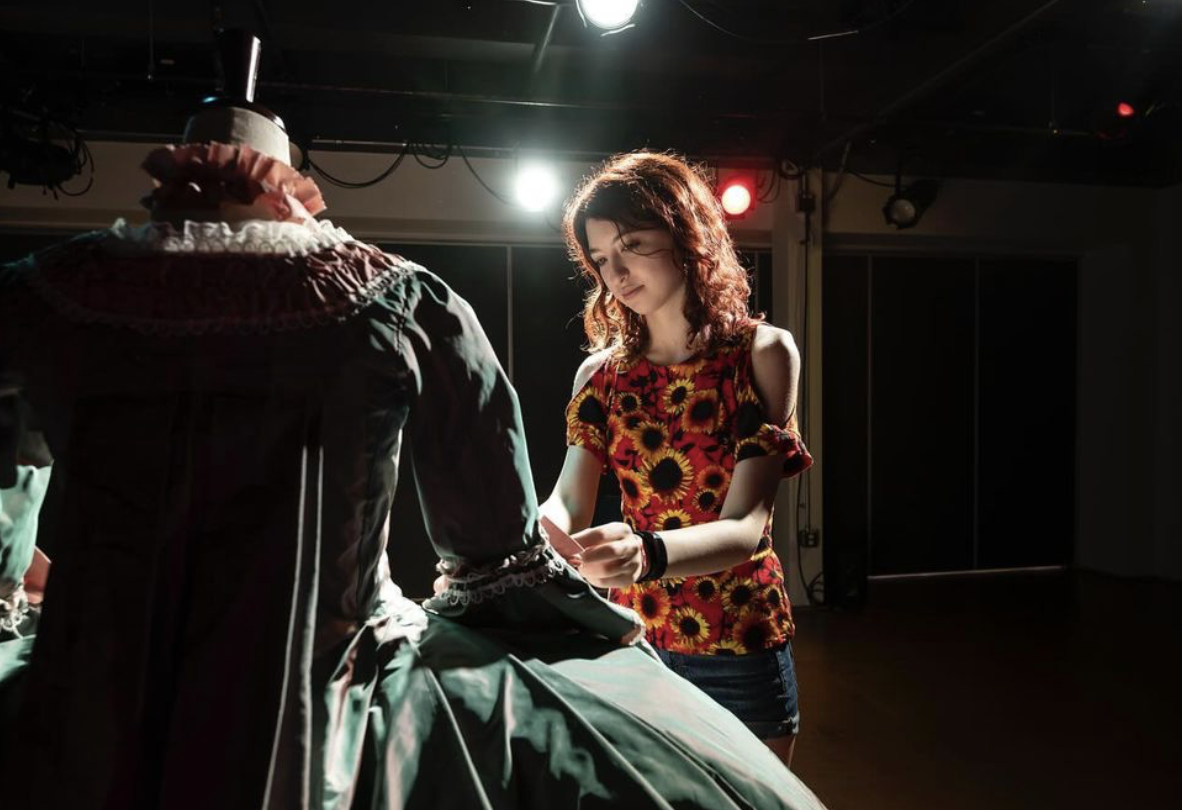
What do you hope people get out of viewing this piece? What message do you hope it conveys?
I hope it’s something they haven’t seen before. I hope they think it’s something that is pretty, more than weird. I hope they see my digital exhibit and see all the research behind it.
I’m especially interested in this period because it’s the time of Marie Antoinette, and she has quite a reputation for her extravagance. That’s not fully undeserved, but most of history is usually harsher on women, so I did a lot of research on the trends of the time, and on how much of this is driven by Marie Antoinette.
I learned a lot about Rose Bertin (or Marie Jeanne Bertin), who had been responsible for designing Marie Antionette’s outfits. It was all part of a bigger picture than just Marie Antoinette. The fashion world was changing because the silk industry was creating this planned obsolescence where they would release a few designs every season. That would make the French industry competitive against the English industry, and then whatever was just made would immediately go into fashion in the French court. This is a time when fashion magazines came about, so everything sped up, and trends were growing faster and faster. The fact that Marie Antoinette was interested in this meant that the whole court was interested in this. It was the start of fast fashion, which is clearly something that we’re still dealing with today.
I just hope it makes people think a little bit, and forces people to stop for a second and look and think, “Oh my gosh, who made that? That must have taken forever!” And it really did!
